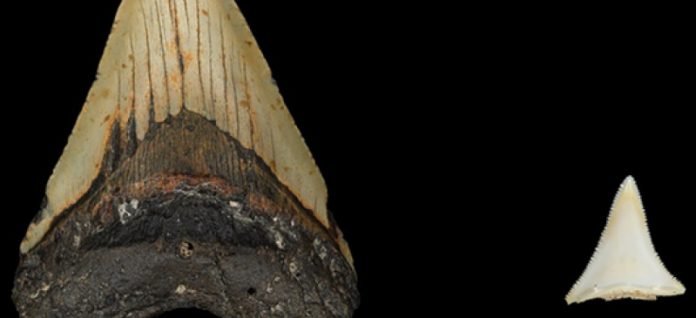
Using zinc isotopes, researchers investigated the diet of the megalodon, the largest shark to have ever lived
Megatooth sharks like Otodus megalodon, more commonly known as the megalodon, lived between 23 and 3.6 million years ago in oceans around the globe and may have reached 20 meters (65.6 feet).
For comparison, the largest great white sharks today reach a length of only six meters (19.6 feet).
Many factors have been discussed to explain the gigantism and extinction of megalodon, with dietary competition a possible key factor.
In a study published in Nature Communications, researchers analyzed zinc stable isotope ratios in modern and fossil shark teeth from around the globe, including the teeth of megalodon and today’s great white sharks.
The new method allows scientists to investigate an animal’s trophic level, which indicates how far up the food chain it feeds.
The team compared the tooth zinc isotope signatures of multiple extinct Early Miocene (20.4 to 16.0 million years ago) and Early Pliocene (5.3 to 3.6 million years ago) species with those of modern sharks.
The researchers analyzed the zinc isotope ratios in megalodon teeth from the Early Pliocene and those in earlier megatooth sharks, Otodus chubutensis, as well as modern great white sharks to investigate the impact these species had on past ecosystems and each other.
“Our results show that both megalodon and its ancestor were apex predators, feeding high up their respective food chains,” said Michael Griffiths at William Paterson University.
“But what’s remarkable is that zinc isotope values from Early Pliocene shark teeth suggest largely overlapping trophic levels of early great white sharks with the much larger megalodon.”
The results imply at least some overlap in prey hunted by both shark species. Kenshu Shimada at DePaul University in Chicago said, “Our results appear to support the possibility for dietary competition of megalodon with Early Pliocene great white sharks.”



